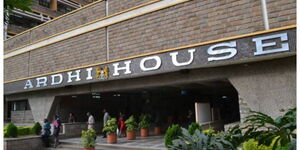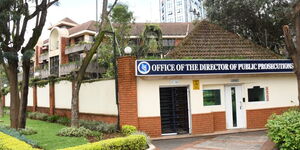Land prices in Kileleshwa, Lavington, Upperhill, and Karen among other suburb areas dropped in the third quarter of 2022, according to the HassConsult report.
The report indicated that the main reason for the decrease in prices was the continuous move from suburban areas to satellite areas like Syokimau and Juja.
Another reason cited by the report was the increased development in the infrastructure sector. The Nairobi Expressway was named as the main contributor to the trend.
“Juja has benefitted from road infrastructure and investors getting drawn to develop housing and affiliated property for higher education centres located in the area.
“Upperhill prices dropped by 0.6 per cent over the quarter, sustaining land value price drops since July 2018,” read part of the report.
Some of the average land prices in the suburb areas are in Kileleshwa Ksh300 million, Lavington Ksh231 million, Donholm the price was Ksh72 million, in Karen prices were recorded at Ksh65 million, prices in Kilimani Ksh403 million, in Kitisuru it was Ksh95 million and in Upper hill Ksh492 million.
On the other hand, the average land prices in satellite areas are in Athi river Ksh 16 million , in Juja Ksh18 million, in Kiambu Ksh44 million, in Kitengela Ksh14 million, in Ngong Ksh27 million, in Ruaka ksh96 million, in Ruiru Ksh28 million, in Syokimau Ksh27 million and in Thika kKh22 million.
Speaking to Kenyans.co.ke, Cathrine Khasoa Corporate Affairs Manager of Optiven Limited, noted that the shift from Nairobi to the satellite areas will be continuous and has been in place since the 90s.
She noted that residents rented or sold their homes that were turned into office spaces.
“The move was expected because of the infrastructural development. Take the Expressway for example, in about 15 minutes one can get to Kitengela. This means they can come to Nairobi for work and live outside Nairobi,” Khasoa stated.
She added that Kenyans are more interested in leaving the congested and air-polluted areas. In the satellite areas, trees have been planted that help in cleaning the air.
“Congestion is another issue, You can not walk on the streets without bumping into a couple of people,” she added.
Moses Muriithi the Chief Executive Officer (CEO) of Fanaka Real Estate echoed Khasoa words adding the residents in Juja are beneficiaries of road infrastructure and investors are drawn to develop housing and affiliated property for higher education centers located in the area.
“As many people rush to buy land in satellites, land owners in the suburbs feel the pinch as clients diminish. The suburbs like Kileleshwa and Kilimani now have skyscrapers, and the majority of people feel they are congested, which affects privacy,” Muriithi told Kenyans.co.ke.
He noted that Juja town reached an all-new high, with the average price of an acre now at Ksh18.8 million, while land at Upperhill dropped by 3.4 per cent over the last year, according to the HassConsult report.
Subsequently, this indicated the fact that satellite towns are growing.
Other than the Expressway the dualling of the Eastern Bypass has opened up areas such as Ruiru Kamakis and Juja, the Northern Bypass, and Thika Road which is attractive to tenants and land buyers.












